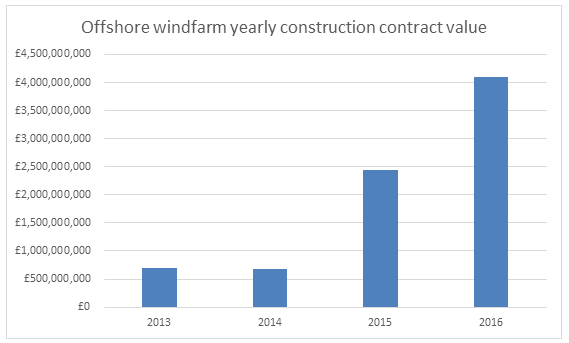Activity in the offshore windfarm sector reached a record high in 2016, as the total construction value for projects reached £4.1 billion, increasing from £2.45 billion in 2015.
According to the latest data from construction industry analysts Barbour ABI, offshore windfarms alone accounted for 42 per cent of UK construction contract value in the utilities and power sector and 21 per cent of the entire infrastructure sector. This trend is likely to continue with the pipeline for future offshore wind developments looking healthy, with Barbour ABI reporting that £23.2 billion pounds worth of construction contract value is in planning.
Three major projects that made a significant difference to the increase in construction contract value for offshore wind farms in 2016 were the Beatrice, Galloper and East Anglia one offshore wind farm projects, together worth a combined £3 billion pounds, which once constructed will produce over 1,600 MW of renewable energy per hour.
Commenting on the figures, Michael Dall, lead economist at Barbour ABI, said: “Back in 2013 offshore windfarms accounted for only 7.5 per cent of the annual construction value for the utilities and power sector, which increased to 42 per cent in 2016, on the back of significant investment in this type of project.
“With reports showing that the cost of producing electricity in this way have fallen significantly, the increase in construction value makes sense.”
“We have also seen a large uptake in the planning pipeline for future offshore windfarms with £23.2 billion worth of construction planned over the coming years, suggesting this burgeoning sector will continue to expand in 2017 and beyond.







